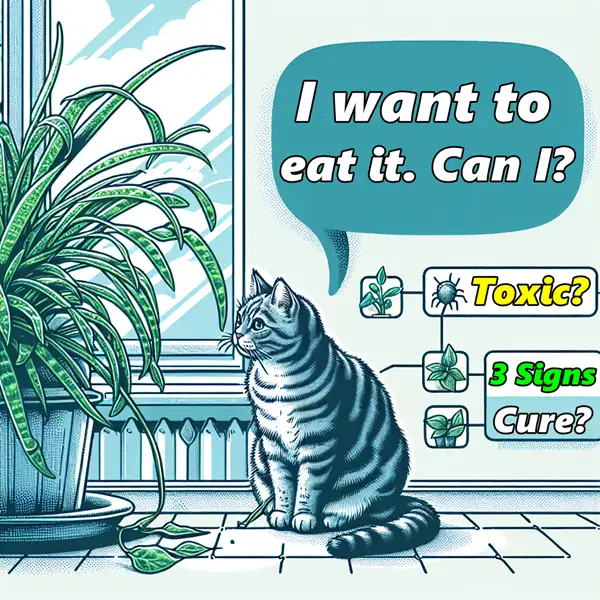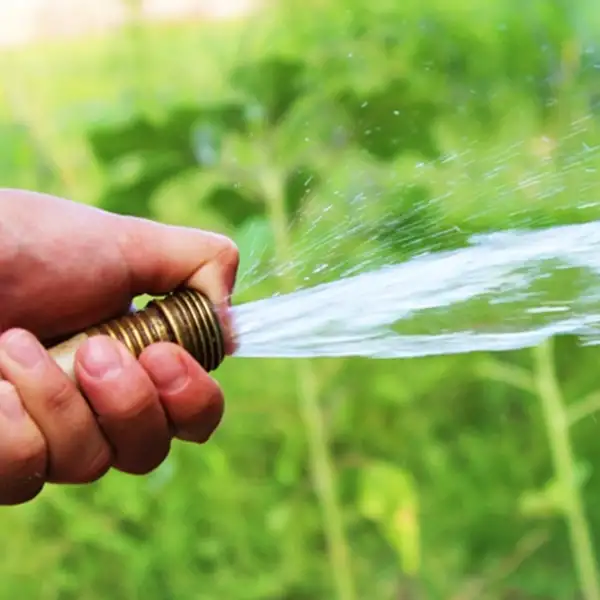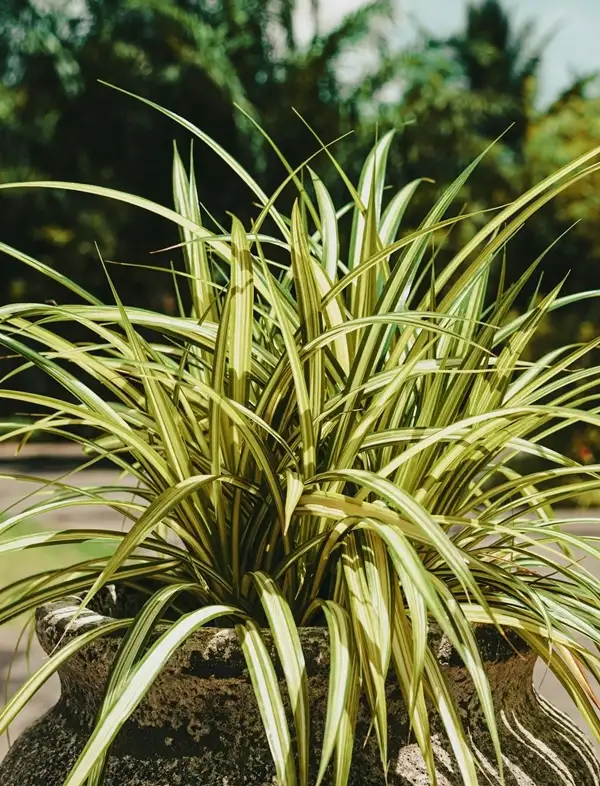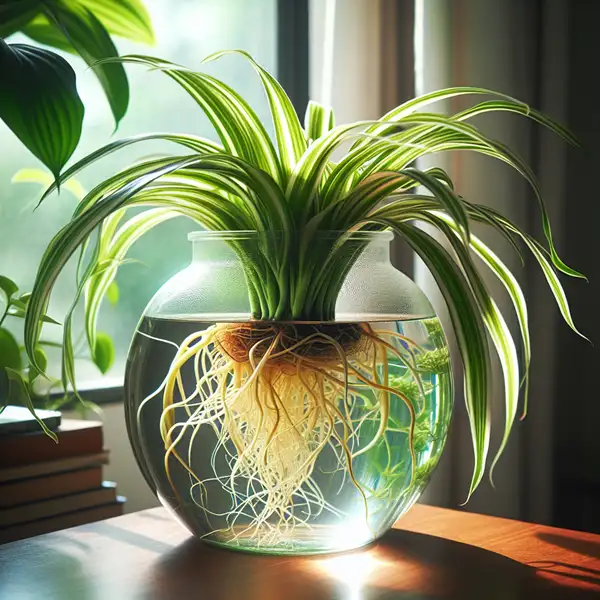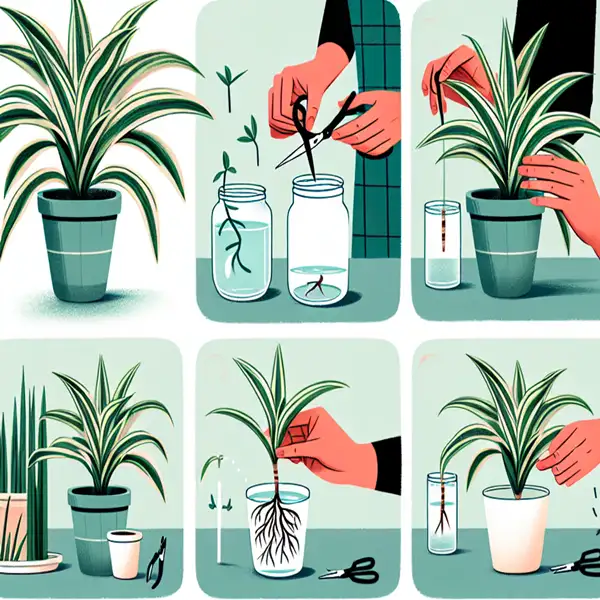Key Takeaways
| Key Takeaways | What You’ll Discover |
|---|---|
| Spider Plants & Popularity | Why these plants are a favorite in many households? |
| Toxicity/ Poisonous Concerns | Are spider plants toxic to cats? |
| Dangerous effects on Cats | What happens when a cat nibbles on a spider plant? |
| Veterinary Insights | What do experts say about cats interacting with these plants? |
| Preventive Measures | Simple tips to keep your plants and pets safe together. |
| Safe Alternatives | Other houseplants that are both beautiful and pet-friendly. |
Nature of Spider Plants
Research shows that more than 70% of households in Western countries own at least one indoor plant. Spider plants are among the most common.
I had 3 kittens when I was a child. I often used to watch them playing with our indoor plants, eating them sometimes too. Then, after some years, I started thinking a very fundamental question: Are Spider Plants Toxic to Cats?
We all know spider plants not only enhance indoor aesthetics but also excel in reducing pollutants i.e. formaldehyde & xylene. Cats have a natural curiosity towards plants. This brings us to a common concern – Are spider plants poisonous or dangerous for our pets?
- Spider plants scientifically known as Chlorophytum comosum belong to the Asparagaceae family. They are immensely popular houseplants due to their easy-care nature & luscious green-&-white leaves.
- Originating from South Africa, these hardy plants can thrive in an array of conditions — from bright yet indirect light to shade or partial sun.
- These appealing houseplants possess spindly leaves sprouting outwards resembling a spider’s legs — hence their name.
- Their blooms propagate miniature baby spiders dangling down some green-and-white strands looking similar to spider webs which mostly amuse our furry buddies enticing them towards a nibble or play fetch with these attractive bushy leaves.
Are Spider Plants Toxic To Cats? Myth or Reality?
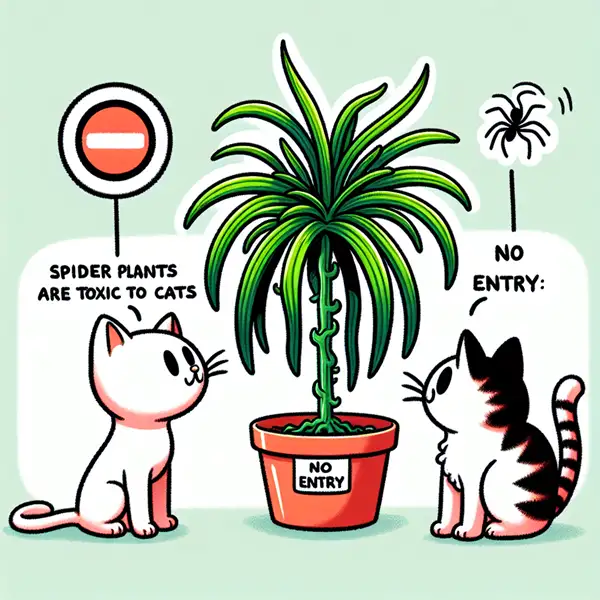
So! Are spider plants toxic to cats in reality or is this just a myth perpetuated by concerned pet owners? Contrary to several presumptions regarding its toxicity level among pet owners, ASPCA (American Society for Prevention of Cruelty to Animals) lists spider plants as non-toxic/non-poisonous for both cats & dogs.
This takes away some anxiety concerning its possible adverse effect on your adorable feline’s health if ingested unknowingly while playing around our green space.
Nonetheless, bear in mind this does not imply allowing your pets unrestricted access. They still contain chemical compounds like saponins which are not lethal but might cause mild discomfort like vomiting or diarrhea if consumed excessively. Due to its bitter & soapy taste, ingestion may cause foaming salivation upon intake. Thus, ingestion should be avoided as a precautionary measure, though it is fundamentally non-toxic.
4 Effects of Spider Plants on Cat’s Health
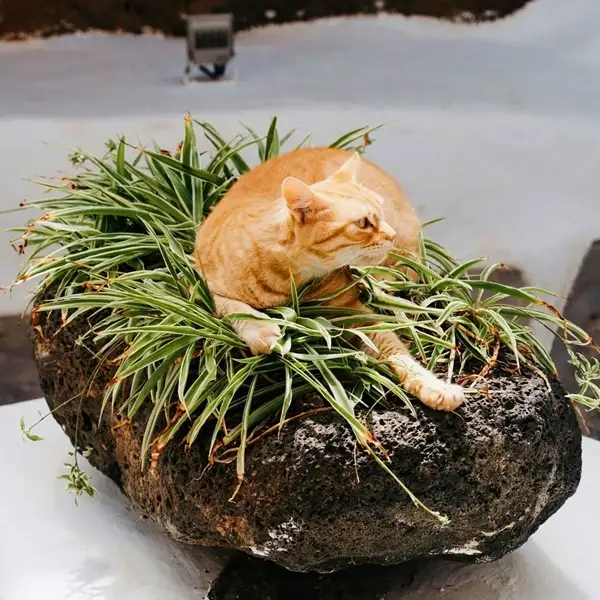
Getting deeper into the chemistry behind spider plants and their influence on a cat’s health unveils some interesting facts.
| Effect | Description |
|---|---|
| Vomiting 🤮 | Some cats may experience nausea leading to vomiting after ingesting spider plant leaves |
| Diarrhea 💩 | Ingestion can cause digestive disturbances & resulting in loose stools |
| Lack of Appetite 🍽️🚫 | Cats might show disinterest in food following consumption of plant |
| Mild Hallucinogenic Effects 🌈🐱 | Similar to catnip, spider plants may induce mild, non-harmful hallucinogenic responses in cats |
But these typically subside over time without needing major medical interventions. Nonetheless, constant observation plus prompt action is crucial after noticing your feline showing persistent discomfort post-consumption to ensure immediate veterinary assistance thereby alleviating any uneasiness they might experience.
Vet’s Opinion – Impact of Ingesting Spider Plants for Cats
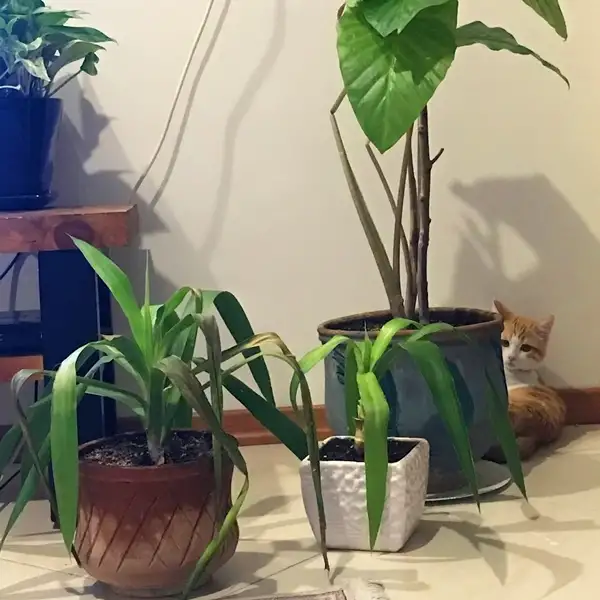
Are spider plants toxic to cats in the eyes of veterinarians? No! But it is still important to prevent your pets from overindulging. Major veterinary institutions agree that while consuming spider plants is not fatal for cats, keeping them out-of-reach would ideally maintain harmony between your indoor green space and your adorable companions.
Dr. Debra Primovic notes-
“Although regarded as non-toxic, ingestion should still deterred since excessive intake can lead to ill-effects like upset stomach or equate allergic reactions.”
2 Practical Tips to Keep Your Cats Safe from Harmful Houseplants
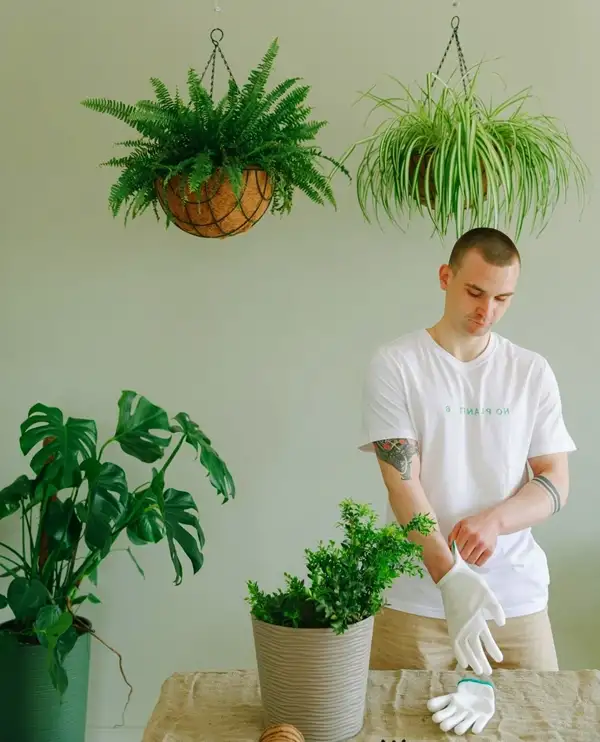
Keeping shared living spaces safe for all inhabitants extends beyond preventing physical harm; it also includes controlling exposure to potential allergenic houseplants that pets might encounter unknowingly, considering our feline friends’ notorious curiosity.
Planting spider plants high enough where animals have difficulty reaching would lower risks, along with regularly trimming unwanted offshoots to ensure fewer loose leaves that might attract playful kittens, resulting in impromptu tasting sessions.
3 Alternative Non-Toxic Houseplants Safe for Cats
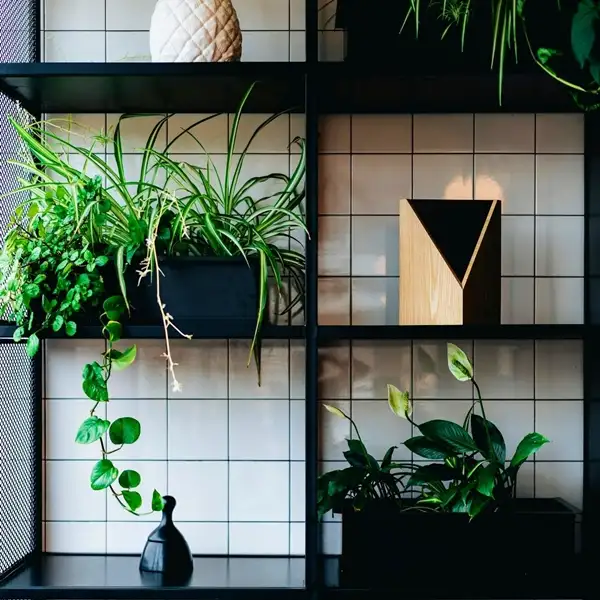
Aside from Spider Plants, other excellent alternatives include –
| Plant | Appearance | Care Level | Benefits |
|---|---|---|---|
| Swedish Ivy 🌿 | Trailing plant with glossy, round leaves. | Easy; thrives in indirect light and regular watering. | Enhances indoor aesthetics; safe for cats. |
| Boston Fern 🌾 | Lush, feathery fronds that arch gracefully. | Moderate; prefers humid environments and indirect light. | Excellent air purifier; adds a touch of elegance. |
| Areca Palm 🌴 | Graceful, arching fronds with narrow leaflets. | Moderate; enjoys bright, indirect light and consistent moisture. | Improves air quality; creates a tropical ambiance. |
All of these are feline-friendly plus equally attractive and beneficial for indoor decor.
Spider Plant Is Not A Cat’s Food
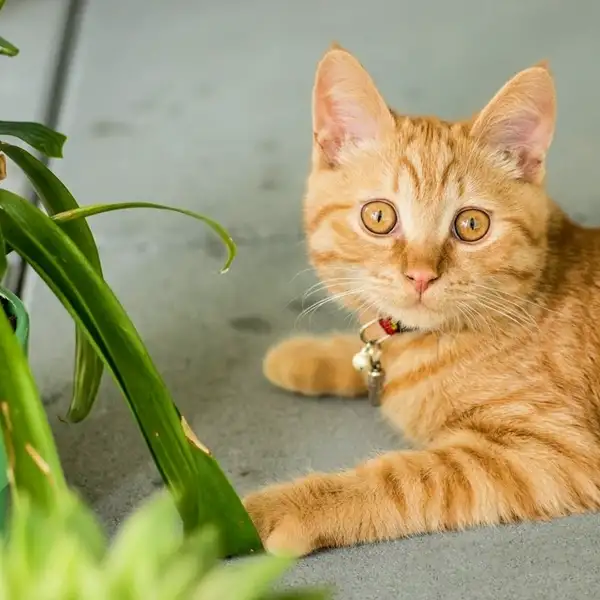
Understanding aspects like the nature and potential impacts upon ingestion not just spider plants but any houseplants, is vital in keeping your home green yet also safe for every occupant including our amicable four-legged buddies cohabiting peacefully sans/without any worries about potential toxicity or health hazards.
Dear Gardeners, ready to take your spider plant propagation skills to the next level? Don’t miss our detailed step-by-step guides on how to successfully propagate spider plants, and how much light they actually need, along with solutions to the common problems you may encounter during this process. Read the full guides now and get your plants thriving!
- How To Propagate Spider Plants (Step-By-Step Guide)
- Do Spider Plants Need A Lot Of Light – 3 Dying Plant Signs
- Are Spider Plants Poisonous To Dogs – The Reality
Frequently Asked Questions
What happens if a cat eats a spider plant?
Cats may experience mild vomiting, diarrhea or appetite loss. But symptoms usually pass on their own.
Why is my cat so obsessed with my spider plant?
The plant’s movement and texture attract cats. Some believe it has mild hallucinogenic effects making it even more intriguing.
Can cats live with spider plants?
Yes! Spider plants are non-toxic to cats but limiting access prevents overconsumption & digestive issues.
What is the most toxic houseplant for cats?
Lilies, poinsettias & certain philodendrons are highly toxic to cats causing severe health issues. Research before bringing new plants home.
Why is my cat licking my spider plant?
Cats may lick spider plants due to their texture, scent or mild stimulating effects. Monitor them to avoid excessive nibbling.
Are spider plants toxic to humans?
Spider plants are safe for humans. But eating large amounts may cause mild digestive discomfort.
Are spider plants easy to care for?
Yes! They stay good in indirect light. They need minimal care & adapt well to various conditions. Perfect for beginners.


